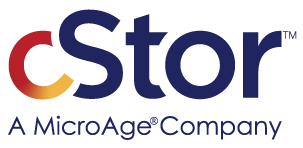Ditch the Legacy IT Headaches: Making the Case for vCIO and IT Management
By Jeff Rosenthal, vCIO Adviser, MicroAge

Since the cloud computing boom began in the late 90s, there has been a steady shift in organizations moving away from internal IT departments. Instead of building their own data centers, developing proprietary software, and managing custom applications, many organizations are ditching the resource-consuming job of maintaining legacy IT for a streamlined managed services model. This blog will explore why adopting a vCIO and IT management strategy—with a services provider whose core competency is IT—may be a better fit for your organization.
Each organization has a primary focus—its core competency. For example, if a company builds widgets, it primarily focuses on building, selling, and distributing these devices. Does having an IT department focused on building and maintaining a data center filled with Microsoft Exchange servers align with the company’s overall goals? Probably not. While the company may need the function of an Exchange (or email) server, they can alternatively invest in services from Microsoft 365.
Outsourcing its IT function may serve this widget company well. Although the expenditure may initially appear high, when the cost for maintaining the technology (staff, equipment, infrastructure, redundancy, security, etc.) is totaled, the in-house expenses are probably more.
If legacy IT is still a focus for your organization, now is the time to improve efficiencies, especially with costs and maintaining staff to support many of these services. Take a look below at how adopting an IT management strategy can help bring your IT department into the 21st century.
vCIO and IT Management

Many companies, especially smaller-sized businesses, employ IT leaders such as a Director/VP of IT or Chief Information Officer (CIO) to help with their support, applications management, infrastructure, security, and software development. These positions are pricey, and often finding a candidate with the right skills is difficult.
Enter the Virtual CIO (vCIO), an as-a-service solution for fulfilling IT leadership roles.
Hiring a vCIO addresses the concern of turnover and poor IT leadership, including a narrow point-of-view that can potentially hinder the growth of that organization’s products or services. vCIOs provide direct oversight to the entire IT stack while providing the organization’s leadership (including its board of directors) a clear report of the current state and roadmap of IT goals over the next two to five years.
A vCIO strategy allows for companies to focus on their core competencies while managing IT typically at a fraction of the cost—and, best of all, eliminates turnover concerns.
IT Services

IT Services are the most common area organizations outsource today. Productivity/email [Microsoft 365, Google Workspace], PBX (Phone) Services, and Customer Relations Management [Salesforce], are all examples of services that can be purchased as needed. However, hosting some of these services on your own raises greater risk when managing up-time, backups, bandwidth, redundancy, etc.
Infrastructure

Legacy IT used to own the entire process of IT, including managing the infrastructure in the environment. I cannot tell you how many data centers I have built in my past. What a nightmare! It was a constant game of calculating how much infrastructure you needed now and how much more you would need for future growth. Then, when the time came for additional infrastructure, you had to buy it, wait for delivery (usually weeks, if not months), provision it for use, and then migrate services. And then comes the work of managing it, keeping it updated, and ensuring it’s continually operational for users.
With Infrastructure-as-a-Service (IaaS) providers like Microsoft Azure or Amazon Web Services, you can provision what you need when you need it. As a result, you never have to over-provision. And with automated server provisioning, your systems can grow and shrink in real-time for what’s needed as demand increases or shrinks, cutting the total cost of ownership (TCO) for the overall investment. You also gain full transparency of your expenditures each month for all services. If you’re operating in a data center environment, add all your costs (operating and capital—including intangible and sunken expenses) from all vendors to determine your overall costs.
You can also work with managed service providers to help you configure, manage, and monitor your infrastructure devices, such as your on-site network equipment or phone system.
Security

If your organization’s headcount is 200 employees or less, you probably have a small IT staff and an even smaller number of people focused on maintaining and monitoring overall IT security. Most security experts agree that organizations need 24x7x365 security monitoring of all core IT systems and services. However, monitoring your systems every second of every day may not be feasible for smaller organizations; staff, after all, take a vacation, get sick, and need to sleep now and then.
Security is one of the main areas of IT where it would be wise to find a security partner or MSP to help maintain and monitor your IT stack, such as a Security Operations Center (SOC). This service can also include implementing tools such as SIEM (Security Information and Event Management) or Endpoint Detection and Response (EDR). Virtual Chief Information Security Officers (vCISOs) can also be a valuable resource instead of hiring one internally—at a fraction of the cost.
IT Support

Depending on the level of support your IT department provides, many of these services can be easily outsourced to partners who can provide greater reliability and availability of support personnel for a fraction of the cost.
To illustrate, consider the costs associated with staffing and turnover, including taxes, benefits, and unemployment costs. You’ll find that the total is almost 22% above base salary on average to keep employees in-house. Add to this the time it takes to manage a team and resolve personnel issues and turnover, all while maintaining adequate response/resolution service levels, and the actual, much higher cost begins to emerge.
Many managed service providers (MSPs) can provide faster services while dedicating more resources to your company at a fraction of the cost it would take to have on-site staff.
Development

Many organizations are turning to IT service providers to help them develop software, either from scratch, supplement current teams, or take over development from a previous group. Outsourcing development allows companies to ensure that high-quality standards are met, and best practices are followed in the Software Development Life-Cycle (SDLC), including providing proper documentation and quality assurance. Keeping development in-house can also lead to adverse outcomes such as technical debt, tribal knowledge of platforms, and the cutting of corners if there are insufficient internal resources to handle the development needs.
Learn more about vCIO and IT Management
If you’re ready to save time, gain the ability to scale resources up or down as your needs and projects evolve, and avoid the headaches that come with hiring, training, and managing an in-house team, let’s explore how a vCIO and IT management strategy may be the best way to achieve your goals.








